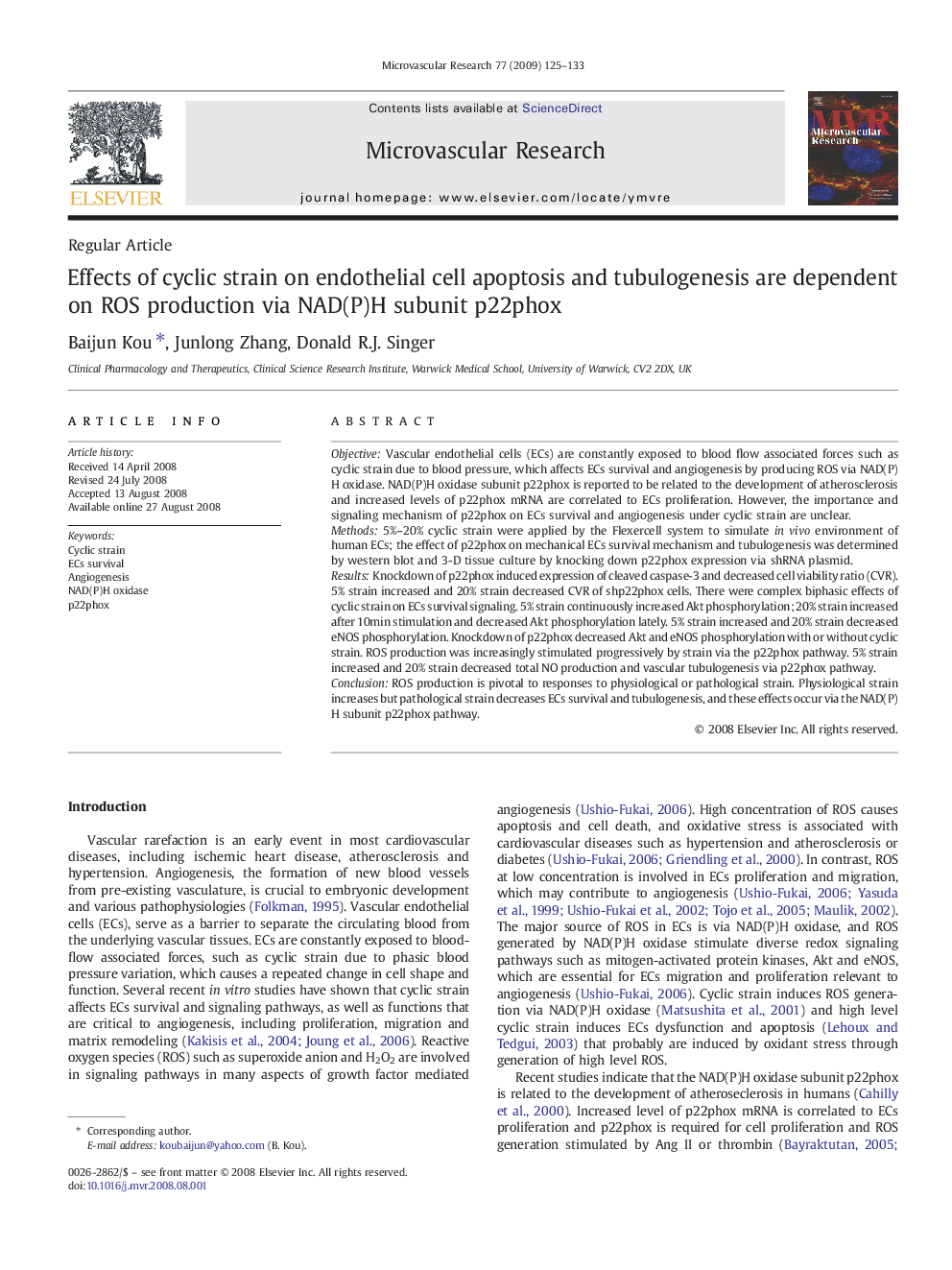| Article ID | Journal | Published Year | Pages | File Type |
|---|---|---|---|---|
| 1995231 | Microvascular Research | 2009 | 9 Pages |
ObjectiveVascular endothelial cells (ECs) are constantly exposed to blood flow associated forces such as cyclic strain due to blood pressure, which affects ECs survival and angiogenesis by producing ROS via NAD(P)H oxidase. NAD(P)H oxidase subunit p22phox is reported to be related to the development of atherosclerosis and increased levels of p22phox mRNA are correlated to ECs proliferation. However, the importance and signaling mechanism of p22phox on ECs survival and angiogenesis under cyclic strain are unclear.Methods5%–20% cyclic strain were applied by the Flexercell system to simulate in vivo environment of human ECs; the effect of p22phox on mechanical ECs survival mechanism and tubulogenesis was determined by western blot and 3-D tissue culture by knocking down p22phox expression via shRNA plasmid.ResultsKnockdown of p22phox induced expression of cleaved caspase-3 and decreased cell viability ratio (CVR). 5% strain increased and 20% strain decreased CVR of shp22phox cells. There were complex biphasic effects of cyclic strain on ECs survival signaling. 5% strain continuously increased Akt phosphorylation; 20% strain increased after 10min stimulation and decreased Akt phosphorylation lately. 5% strain increased and 20% strain decreased eNOS phosphorylation. Knockdown of p22phox decreased Akt and eNOS phosphorylation with or without cyclic strain. ROS production was increasingly stimulated progressively by strain via the p22phox pathway. 5% strain increased and 20% strain decreased total NO production and vascular tubulogenesis via p22phox pathway.ConclusionROS production is pivotal to responses to physiological or pathological strain. Physiological strain increases but pathological strain decreases ECs survival and tubulogenesis, and these effects occur via the NAD(P)H subunit p22phox pathway.
